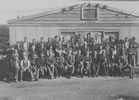Patents and trademarks
An invention is a new device or process. A patent is a property right granted (by the government) over an invention. The owner of the patent has the exclusive right to use that invention for up to 20 years. A patent can be bought, sold, transferred or licensed just like other types of commercial property.
In New Zealand patents are issued by the Intellectual Property Office (IPO), part of the Ministry of Economic Development. Anyone wishing to patent an invention in New Zealand supplies designs to the IPO, which issues the patent if it finds that the invention has enough unique features and is able to be used by industry. The IPO maintains a register of all patents granted in New Zealand. It also registers trademarks, often known as brands or logos, and used to distinguish a particular business from others in the same market. Designs (the external appearance of objects) and plant variety rights (the right to produce and sell a new variety of plant) can also be registered.
Early patenting system
New Zealand’s first system for officially issuing patents was set up in 1860. The Patents Act 1860, closely modelled on a similar British law, established the New Zealand Patent Office. In 1861 it issued its first patent to A. G. Purchas and J. Ninnis for ‘An Invention for the preparation of the Fibre of the Phormium tenax (flax)’. From 1882 applications for patents could be filed at any courthouse, greatly speeding up the process of application and registering. In 1889 a revised Patents Act allowed the Patent Office to also administer trademarks and designs.
Pioneering New Zealand inventions
Commercially successful inventions tend to be those that meet immediate practical needs. The most common patents in the 1860s and 1870s related to flax spinning and gold mining, but from the 1880s inventions for farm machinery overtook them. Ernest Hayes produced many new tools and gadgets from a small shed on his Central Otago farm, including an improved wire strainer for farm fences, patented in 1923 and still made and widely used in the 2000s.
As local manufacturing industries developed, they resulted in more sophisticated inventions such as the Tullen snips – scissors made using a heat-treating process, which were tough enough to cut coins in half. By the 1980s more than 20 million had been sold.
New Zealand’s public health system has produced medical inventions such as the Baeyertz measuring tape for accurately predicting human birth dates, patented in 1982 and still used worldwide in the 2000s. New Zealand is earthquake-prone, and government scientist Bill Robinson developed the seismic shock absorber, a flexible building pile. It now protects major public buildings such as the University of California Teaching Hospital, Tokyo’s central post office, and New Zealand’s Parliament Buildings and national museum.
That puts a lid on it
Failing to patent an invention can enable others to profit from it. In 1884 John Eustace, a Dunedin tinsmith, invented the airtight lid still used on containers such as paint cans and tins of golden syrup. He sent to England to have a die made to mass-produce his invention, but did not take out a patent on it. Soon many British companies began making lids using the Eustace design. One company even offered Eustace thousands of pounds for the rights to it, before realising they could legally copy it for nothing.
Patent agents
Patent agents are experts in patent law who assist inventors and others to register and protect their inventions. New Zealand’s first patent agent, Henry Hughes, was an engineer from the north of England who specialised in steam locomotives. He migrated to Wellington with his family in the 1870s and set up the country’s first patent agency in 1882. One of his agency’s early clients was the aviation pioneer Richard Pearse, perhaps New Zealand’s most renowned inventor. Henry Hughes Ltd is New Zealand’s oldest firm of patent and trademark attorneys. The New Zealand Institute of Patent Attorneys, the professional body representing patent agents, was established in 1912.

